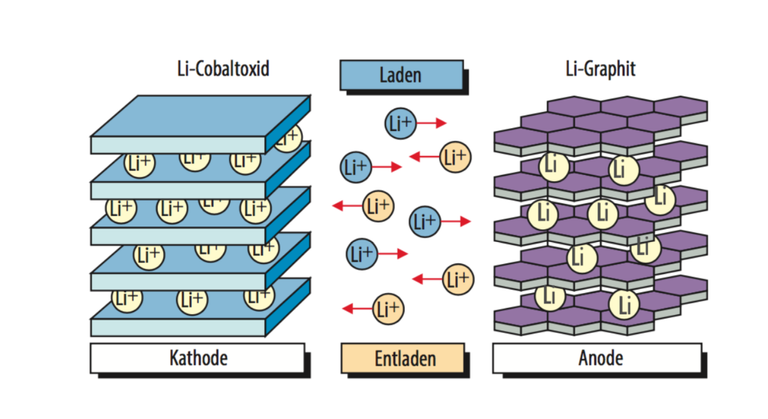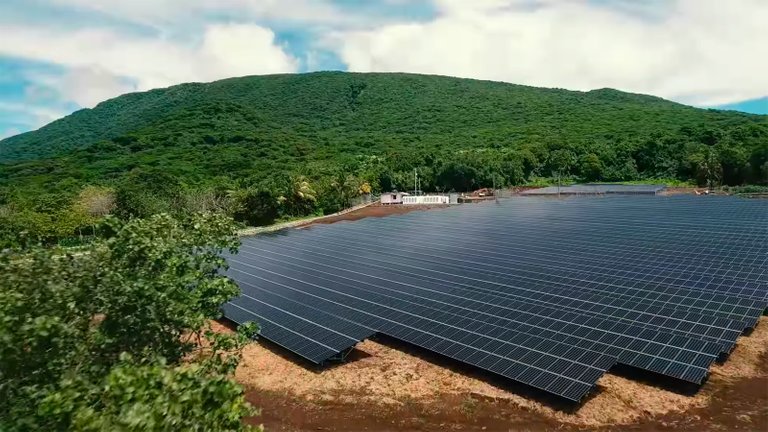
Introduction
The energy revolution is on everyone's lips. Companies such as Google with their project 'Project Sunroof', Tesla with the newly presented 'Solar Roof' or the German government, which agreed on the 'Climate Action Plan 2050' on November 11, 2016, bring the topic of the energy revolution to the media every week , Even in private life, many people today are concerned with the energy turnaround and want to become increasingly independent of electricity providers and 'dirty' energy. To do this, 1.5 million households in Germany have PV systems on the roof. But these have a big drawback - The sun shines during the day when most people are at work, and in the evenings, when the sun goes down, most of the electricity is consumed. So far, the only solution is to sell the electricity that was produced in the evening and buy the electricity you need in the evening, just like without a PV system. For many years now, there have been many companies that are working on this problem and are offering a correct solution: power storage.
In the following, we will have a look at electricity storage systems that are suitable for normal household use. They store the solar energy of PV systems produced during the day and are supposed to do it during the night. This new type of electricity storage has the advantage that it can be used not only by companies or large electricity producers, but also by normal households with PV systems. Here, the energy supply of a single household plays a major role. Many interested parties are also asking themselves whether such an investment is worthwhile in the first place, since this power storage solution is still quite new and therefore not yet available on the market. But what makes the growing electricity storage market so attractive that in addition to well-known technology-based companies such as Bosch or LG, large companies such as Daimler, with their subsidiary Accumotive, or emerging companies such as Elon Musk's Tesla compete with experienced companies to take on the race for the next breakthrough in this marktet? Daimler and Tesla come from the automotive industry. So what is the connection between the traditional automotive industry and the new, innovative home storage market, and what is driving carmakers to move into a completely new product segment? Is this market for power storage at all or is it a concept for the future?
I will try to answer these and more questions in the following and to discuss the topic current memory more exactly.
Theoretic Basis
Power storage devices are the same as standard lithium-ion batteries, as found in smart phones and other electrical devices built. Starting with electricity generation, the PV systems required in addition to the electricity storage system convert the incoming energy into electricity when the sun shines. This is fed into the electrical grid in the house and thus reaches the power storage. The power storage unit consists of many electrochemical cells, all of which have the same structure and are interconnected. First of all, the current reaches the cell via electrically conductive layers of aluminum and copper, which serve as carrier materials. Between these layers are cathode and anode, which are separated by an electrolyte solution and a separating layer, a so-called Seperator. The cathode - visible in light blue at the bottom of the graph - consists of lithium metal oxide, the anode, which is shown in purple on the right, made of graphite, ie carbon. During the charging process, the positively charged lithium ions pass through the separator from the cathode into the anode where they are absorbed by the graphite. During the discharge process, this is reversed and the positive lithium ions migrate back into the cathode. The chemical energy is converted back into electrical energy during this discharge process and is fed into the power grid.
An intelligent power grid ensures that the electricity produced by the PV systems that is not consumed directly flows first into the power storage unit and charges it. If the power storage is already fully charged, the power is introduced into the city power grid.

Material and Methods
When it comes to the type of energy storage of power storage, there are a few points in particular - the charge and discharge cycles, ie the life, the memory size, which there is great variance with most providers, and the maximum efficiency - ie how much Memory size can really be used. Because batteries have the big problem not to be deep-dischargeable. This means that the battery always has to be charged to a certain degree in order to guarantee the durability and thus you can not fully exploit the memory size. There are big differences between the different memory types. The main market share of power storage make the power storage with the lithium-ion batteries described above. But there are also alternatives to the conventional lithium-ion batteries, the lead-acid batteries.
Lead-acid and also lead-gel accumulators have been developed especially for solar power storage. The advantages of this are that the view is cheaper. In addition, lead batteries are more robust and require less maintenance. In addition to the advantages, however, lead acid batteries also have some disadvantages: »In the interior of a battery, the electrodes wear out over time, which is also called electrode corrosion.« With this main reason of greater wear and thus shorter life, and also the Reason that lead storage with the same storage capacity are much larger and heavier than lithium-ion batteries, the market is dominated by the lithium-ion variant.
For a better understanding and to get an insight into the view of an expert, we conducted an interview with H. Koch, the co-founder and CEO of the power storage manufacturer Hycube.

Result
In the first half of 2016, 12,700 power storage systems were sold in Germany alone. According to a study by EuPD Research GmbH, a total of between 23,000 and 25,000 electricity storage units are to be sold in Germany by the end of the year, which would correspond to an approximate market growth of 40% compared to the previous year. These figures clearly show what a growth market the market for private energy storage systems is, but also that, although interest among many citizens seems to be there, the actual buying interest is still not that great. Why is that? Electricity storage is still new on the market today. Although there are dozens of providers, but as with electric vehicles, the biggest problem is the accumulator. The issue of durability is still a major impediment to many potential customers. Although manufacturers like the market leader "sonnen" give a guarantee for ten years. Calculated by manufacturers with a shelf life of up to 25 years. It can be assumed, however, that the development of such accumulators is far from over, but that further progress will be made here in the coming years. If you buy a rechargeable battery that can last twenty years, it will not be nearly state of the art in twenty years. Nevertheless, a power storage can already be useful. If one is like 1.5 million others in Germany owners of a PV system on the roof, they could make themselves useful again after falling feed-in tariffs and constantly rising electricity prices by being able to store their own electricity and thus become partially self-sufficient and independent of the price changes of the big electricity providers. »The Fraunhofer Institute for Solar Energy Systems has calculated that the purchase of a private home storage is worthwhile as soon as the devices cost € 600 per kilowatt-hour or less. That's about to be expected in 2017. «
But not only for the private household offers the large market for electricity storage. Companies like Daimler or Tesla have different aspects in mind than private customers. If you buy an electric car these days, you pay to 'refuel' the car the normal electricity price. With electricity storage, there is now the possibility to charge your car completely free, namely by stored solar energy. As a result, both automakers launched their own power storage this year. Through Tesla's and above all visionary Elon Musk's popularity - which is not only to be found in the USA - began a little hype for power storage. Because with the popularity of electricity storage and the associated possibility to refuel his electric car for free, thereby increasing the demand for electric cars. For these manufacturers, it is not just a new market to be conquered, but rather an investment in the market power of the electric car. For owners of an electric car, which are currently cheaper with the current electricity prices, as with gasoline or diesel, but just still refueling, so worth a power storage also - provided you have already installed PV systems.
Summary
Whatever the question of whether a power storage is financially worthwhile or not, it is probably always on the individual case. What are the current electricity prices? How much energy does my PV system produce? How much electricity do I need during the day? A suitable profitability calculation also includes factors such as inflation, the increase in electricity prices over the years, maintenance, and other factors. The ROI is therefore very dependent on individual factors. Thus, there is currently no blanket response to the question of whether the use of a power storage is worthwhile or not. With the ongoing development of accumulators and storage, it is quite realistic that in a few years the purchase for each owner of a PV system will pay off. If electricity storage prices go down and technology matures and improves, it is quite possible that this market will grow strongly. At the moment, the luck of autarky is offset by the high admission price and the costs for repair and maintenance. So who does not shy away from the costs, at least for the most part to be independent of the electricity providers, for the power storage is definitely worth the purchase.
However, the subject of power storage will remain up-to-date and will be particularly exciting in the future, with lower prices and better technology. The visions of the big manufacturers are there and are about to come true. This will not happen in one shot, but as development. But "battery storage in a modern building will become as normal as a heating system at the moment, and will likely displace it."